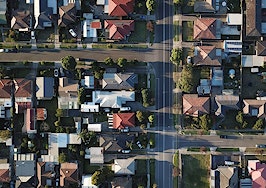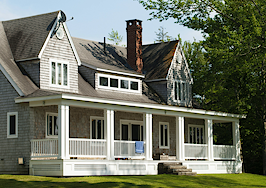Home price growth finally slowed slightly in September 2021 after several months of acceleration, with home prices increasing 19.5 percent year over year, down from a 19.8 percent annual gain made in August, according to the S&P CoreLogic Case-Shiller National Home Price NSA Index. This marked the first month since May 2020 in which annual home price growth decelerated.
“After 14 consecutive months of acceleration, the S&P CoreLogic Case-Shiller index finally took a turn,” CoreLogic Deputy Chief Economist Selma Hepp said in a statement. “While housing market activity is experiencing a typical seasonal slowdown, homebuyer demand remains strong and continues to push total home purchases above pre-pandemic levels, resulting in another month of close to 20 percent annual gains in home prices.”

The 10-City Composite annual increase was 17.8 percent, down from 18.6 percent in August. Meanwhile, the 20-City Composite showed a 19.1 percent annual increase, down from 19.6 percent the previous month.
Out of the 20 cities, Phoenix, Tampa and Miami showed the greatest annual home price gains. In Phoenix, home prices rose 33.1 percent year over year, in Tampa, prices were up 27.7 percent year over year, and in Miami, home prices increased 25.2 percent year over year. Six out of 20 cities saw higher annual price increases during the year ending September 2021 compared to the year ending August 2021.
Meanwhile, month over month, the national index increased 1.0 percent and the 10-City and 20-City Composites increased 0.7 percent and 0.8 percent, respectively, before seasonal adjustment. After seasonal adjustment, the national index saw a 1.2 percent gain while the 10-City Composite saw a gain of 0.8 percent and the 20-City Composite saw a gain of 1.0 percent.
Realtor.com Manager of Economic Research George Ratiu said in a statement that the slowed home price growth was likely a result of increased inventory and rising mortgage rates.
“Home prices advanced at 19.5 percent in September, pointing to a moderating pace, as an increase in new listings offered buyers more options,” Ratiu said. “The other factor contributing to the slowing price growth was the jump in mortgage rates, with Freddie Mac’s 30-year fixed loan moving from 2.87 percent at the start of September to 3.01 percent by the end of the month, curbing buyers’ ability to bid up prices.”
Although home price growth remains relatively strong, Hepp added that there are signs that the U.S. is getting closer to a more balanced market.
“Nevertheless, while activity continues to outperform pre-pandemic levels, there are encouraging signs of a slow albeit welcomed return to more sustainable balance between buyers and sellers. There is still low availability of for-sale homes, which continues to drive price growth, but the competition has faded and assuaged some of the bidding war intensity. Overall, home price growth is likely to continue slowing over the next year.”













